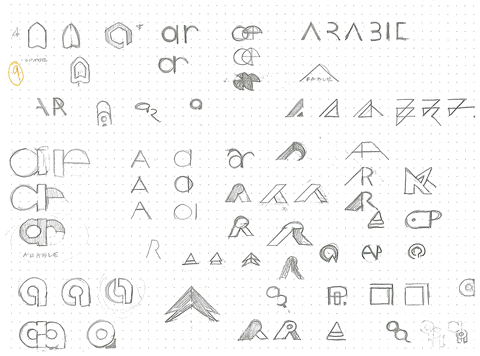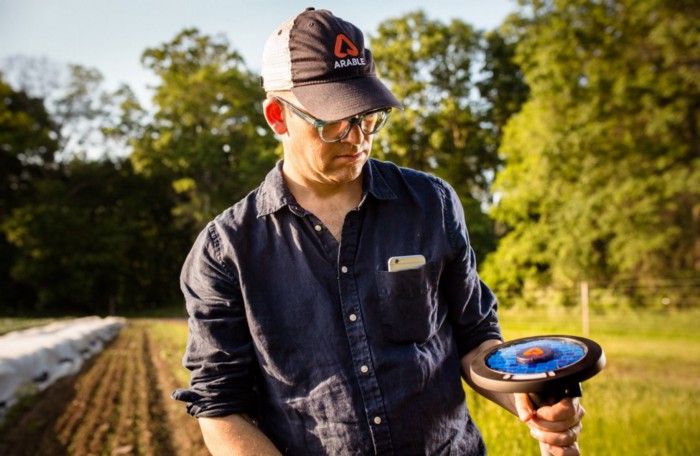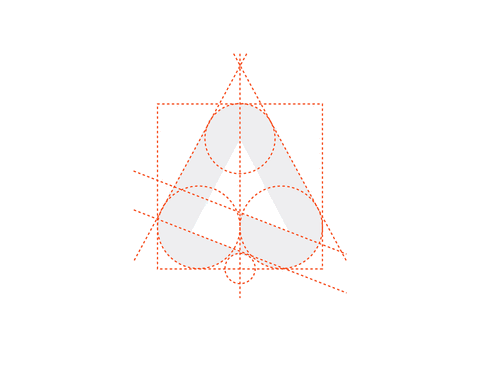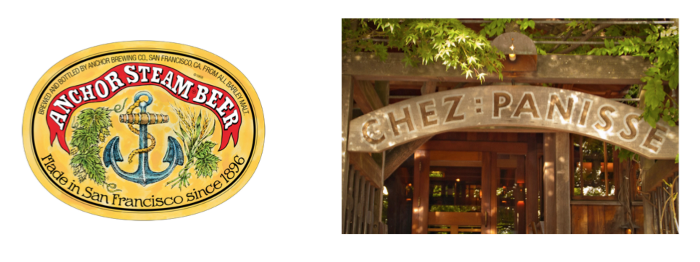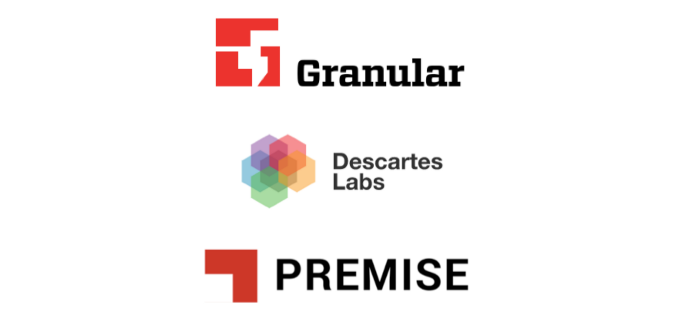Branding for the Reluctant Capitalist
How I learned to stop worrying and love the brand
A couple years into the lifecycle of my company, Arable, my team and I realized that we had a branding problem.
Our original name, Pulsepod Designs Limited, was not doing us any favors, and our logo — a trite symbol representing a radio beacon symbol — was also limiting.
Around this time, I also took on a new title, CEO. My old job had been to make a thing. My new job was to make a company that makes a thing.
Adam Wolf with his product, the Arable Mark.
The CEO of a young company has a tough job because we sell air: convincing people to invest their time, treasure, and perhaps some fraction of their lives bringing that ether to life. I was selling a vision for a world that didn’t yet exist, enabled by a product that didn’t yet exist, attracting a team that didn’t know us or why they wanted to work for us; getting the time and attention from investors to recognize that we were different.
Most of my waking hours I think about science, agriculture, or agricultural science, and for a good reason. You should not be a tech startup, in a space that includes the largest industrial corporations in the world, without a strong sense of intellectual property. But at some point in the life of our company, I realized the quickest (and potentially most durable) way to create value for a startup is not from engineering at all, but from brand and identity.
I struggled with this notion for years, because the whole concept of branding seemed so fake. After all, I don’t wear any clothes where you can identify the brand, I have never Liked a company on Facebook, and I avoid media with advertisements. So when it came time to come up with our own brand and identity, I was somewhat unclear on the goal. Did we even have to do it in the first place?
I came to realize that it was important — and I hope to convince you as well.
A short exercise
Without rehashing how we came up with Arable’s branding, you’ll see that by starting with mission and values, it’s possible to brainstorm the most oblique names and logos, and have them tell your story fully without banging people on the head with it.
For those who are skeptical about branding, it may be helpful to go through a short exercise.
Think about a few brands from which you absolutely would buy anything they made, because it’s always great quality, always intriguing. They don’t have to be major brands (Patagonia, Esprit) and they probably aren’t. When I went through this exercise, I picked Anchor Steam and Chez Panisse.
Start to unpack them: Anchor Steam evokes the Barbary Coast days of San Francisco with their recreation of steam beer. Every Christmas they have a beer with a California native tree on it — that’s so cool! They made a gin named Junipero, somehow bridging the juniper berry ingredient with the early Spanish explorer Junipero Serra.
Who actually knows the Chez Panisse reference (Marcel Pagnol??) but I feel intuitively it is about friends and heartache and memorable times around a table.
Now step back a moment: do either of these names actually say what the company does? It starts with a name, and a great name can say far more than any pitch book or one-pager. When you see Thinx do you imagine performance underwear? Or do you imagine female power and intelligence? No wonder their hashtag is #shethinx. A name is an exercise in lateral associations around how you want people to feel when they are exposed to your company. And that’s how we arrive at identity.
Another short exercise
There is an amazing book on naming called “Don’t Call it That” by Ninety Nine Monkeys (itself a great name). It starts off with a fun exercise: write down ten or twenty trite names for your company — as many as you can think of.
What makes them so terrible? They say exactly what you do in the most literal way and they don’t let through any of your core values or larger mission, those things that create an emotional connection with people.
Now write down how you want people to feel when they hear your name. You’ll start to make connections with places and people and remember bits of history and words you once heard. These are going to reflect who you are and what you’re about on an emotional and not literal level.
My favorite branding in the agri-tech space includes Granular, Descartes Labs, and Premise. If you look at a sea of green and blue logos with “farm,” “aqua,” “crop,” “ag,” etc., Granular sticks out in red and black. Descartes Labs’ logo is for sure logical and rational (cf. Cartesian world view) and just as for sure nerds (Cartesian being a coordinate system used for mapping, which is what they do). Premise has an open-ended (but positive sounding) name that appeals to NGO wonks, and a logo that suggests the part as it relates to the whole: just like sampling itself.
These all have punch because they feel authentic, and they convey something worth investigating about the uniqueness about the company behind the brand. This is essential for cutting through the noise of modern commerce.
But more than that, all of these companies’ materials are on-brand, meaning the lettering and colors are consistent, their semantic choices are consistent, and their presentation is always executed with care and precision. What these tell you is that there is a little world inside that company, and it will grow and come to occupy a durable place in the economy, meaning it’s a worthwhile commitment of your attention (if you’re a customer), the next couple years of your life (if you’re an employee), and your money (if you’re an investor). Brand says “this vision will become a reality.”
Brand: invest in it and it will pay you back manyfold!
Adam Wolf is Founder and CEO of Arable. For more founder wisdom, visit Village Capital’s Medium page or our website.
